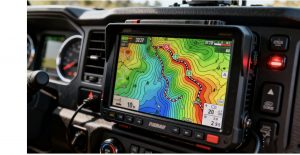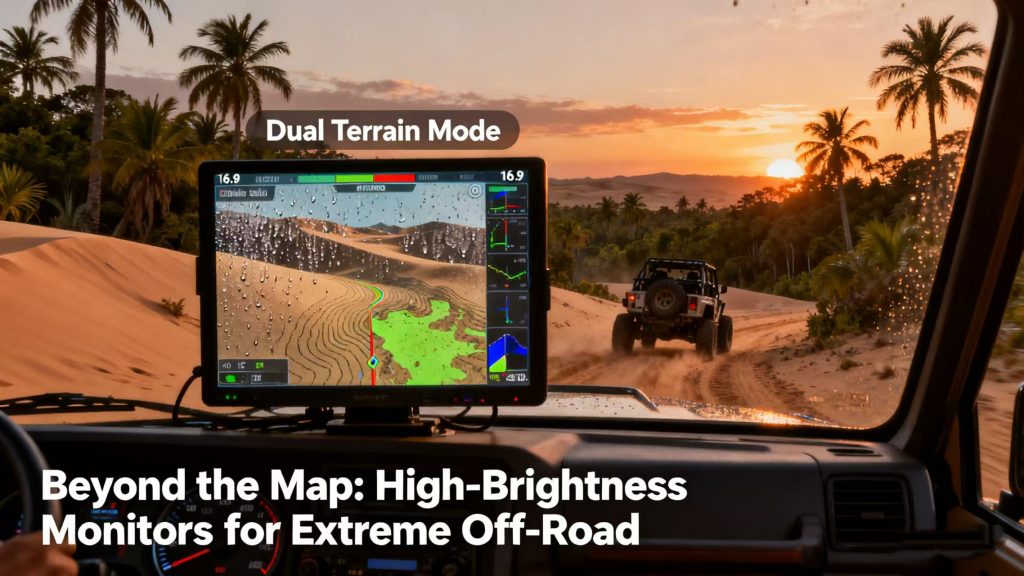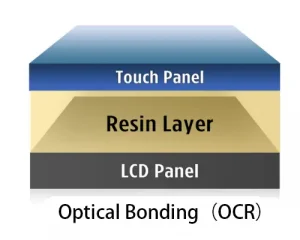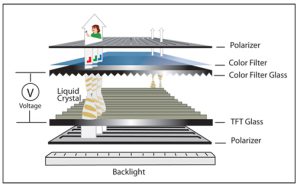In the challenging world of Off-Road Navigation Display, clarity is safety. Traditional displays often fail under the harsh glare of the sun, leaving drivers squinting and distracted at critical moments. This article explores how a High-Brightness Dashboard Monitor transforms off-road adventures by ensuring vital navigation data is always visible, reducing driver fatigue, and enhancing decision-making in unpredictable environments. We’ll delve into the technology behind these displays and why they are an essential component of any serious Off-Road Navigation Display system.
The Critical Role of Sunlight Readability in Off-Road GPS Screens
Off-road driving demands unwavering attention to both terrain and navigation. A Sunlight Readable GPS Screen is not a luxury—it’s a necessity. These displays combat ambient light with high nit ratings, ensuring maps and data remain clear even in direct sunlight. For example, modern displays can achieve brightness levels of 1000 nits or higher, significantly reducing the effort needed to read critical information. This immediate accessibility allows drivers to keep their eyes on the path, making quick decisions without dangerous delays.
The technology behind sunlight readability involves more than just brightness. Anti-Glare (AG) and Anti-Reflection (AR) coatings are applied to the screen surface to minimize reflections and scatter light. This combination ensures that sunlight doesn’t wash out the display, preserving contrast and color accuracy. For off-road enthusiasts, this means reliable access to navigation cues, regardless of time of day or weather conditions.
Real-world case studies show that vehicles equipped with high-brightness displays report fewer navigation-related errors. The ability to glance at a clear screen instead of struggling to see reduces cognitive load, keeping drivers focused on managing tough trails. This seamless integration of technology and practicality defines the modern off-road experience.
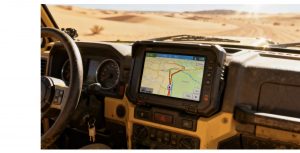
Ruggedized Car Touchscreen: Built for the Toughest Terrains
Off-road environments are brutal on equipment. A Ruggedized Car Touchscreen is engineered to withstand vibrations, shocks, and temperature extremes that would disable standard displays. These screens are built with durable materials and often feature optical bonding—a process where the touch layer is laminated to the display to reduce internal reflection and strengthen the panel. This not improves visibility but also protects against moisture and dust ingress.
Durability testing for these components goes beyond typical automotive standards. For instance, they must operate reliably in temperature ranges from -30°C to 80°C, ensuring functionality in deserts or icy trails. The physical robustness is complemented by responsive touch technology, designed to work even when wet or when the driver is wearing gloves, a common scenario in off-road conditions.
The investment in a ruggedized display translates to long-term reliability and reduced downtime. For serious off-roaders, this means a navigation system that is as resilient as their vehicle, capable of enduring years of adventure without failure.
Waterproof Display for 4×4: Ensuring Reliability in Extreme Conditions
Water is a constant threat in off-roading, whether crossing streams or driving through heavy rain. A Waterproof Display for 4×4 is sealed to the highest ingress protection standards, such as IP67, meaning it is completely protected against dust and can withstand immersion in water. This level of sealing ensures that splashes, spills, or even temporary submersion won’t compromise the unit’s functionality.
The sealing process involves specialized gaskets, sealed connectors, and waterproof membranes that allow for touch sensitivity without exposing internal components. Beyond water resistance, this also guards against humidity and corrosion, which can silently degrade electronics over time. For a 4×4 enthusiast, this protection is crucial for adventures that involve river fording or tropical climates.
Consider the reliability of a waterproof display as insurance against the elements. It enables drivers to push their limits with confidence, knowing their navigation system won’t fail when they need it most, deep in a remote location where help is far away.
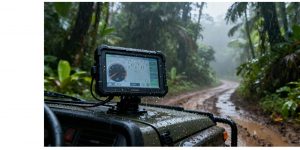
The Technology Behind a High-Brightness Dashboard Monitor
The core of a superior Off-Road Navigation Display is its High-Brightness Dashboard Monitor. This isn’t just about raw luminosity; it’s a symphony of advanced technologies working in concert. Mini LED backlighting systems with thousands of dimming zones can achieve extreme brightness levels—1000 nits or more—while maintaining energy efficiency and precise control over contrast ratios. This allows the screen to overpower direct sunlight.
To mitigate the reflections that high brightness can’t overcome alone, displays employ AG (Anti-Glare) and AR (Anti-Reflection) coatings. AG coating creates a micro-rough surface that scatters reflected light, while AR coating uses thin film layers to cancel out reflections through optical interference. The result is a display that remains readable even with the sun shining directly onto it.
The following table compares key specifications of standard vs. high-brightness off-road displays:
| Feature | Standard Display | High-Brightness Off-Road Display |
|---|---|---|
| Typical Brightness | 140-700 nits | 800-1000 nits |
| Surface Treatment | Standard coating | AG + AR Coating |
| Operating Temp. Range | -20°C to 70°C | -30°C to 80°C |
| Touch Technology | Standard capacitive | Glove-friendly, wet-operational |
This technological synergy ensures that every piece of information, from topographical maps to vehicle telemetry, is presented with uncompromising clarity.
Integrating a Superior Off-Road Navigation Display into Your 4×4
Choosing and installing the right Off-Road Navigation Display is the final step to enhancing safety. The ideal display should combine high brightness, rugged construction, and waterproof credentials. It should be paired with navigation software that offers detailed topographical maps, trail ratings, and waypoint marking for a complete off-road guidance system.
Proper installation is crucial. The monitor should be mounted to minimize glare from overhead sun and interior lights, often on a dashboard or console designed for easy viewing without obstructing the view of the trail. Power management is also key, ensuring the display operates efficiently without draining the vehicle’s battery during long, ignition-off stops.
The result is a transformative upgrade to any off-road vehicle. It reduces driver strain, prevents wrong turns in dangerous areas, and provides the confidence to explore further. By investing in a display designed for the extremes, off-roaders equip themselves with a tool that truly enhances capability and safety.
